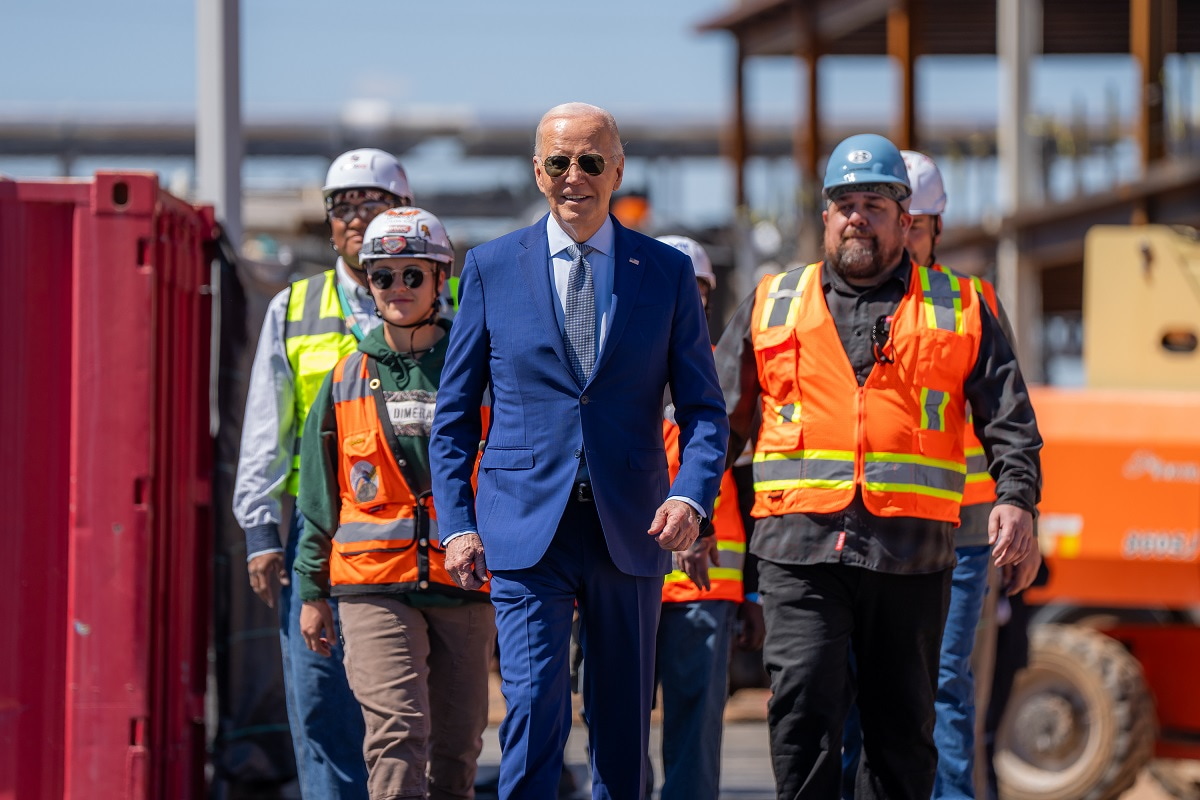The city of Kokomo sits about an hour’s drive north of Indianapolis in the American Midwest. Immersed in the agricultural heartland between the historic industrial centres of Detroit and Chicago, Kokomo’s once thriving automobile manufacturing plants have suffered under decades of deindustrialisation, leaving it one of the hardest hit localities during the Global Financial Crisis. Otherwise unremarkable smalltown America, Kokomo is positioned at the forefront of the country’s biggest economic and technological overhaul in modern history. Revitalisation efforts under the Inflation Reduction Act (IRA) will help turn it into a key location for the manufacture of electric vehicle (EV) batteries as part of America’s broader strategy to reclaim its industrial prestige.
An influx of foreigners into Kokomo’s mostly white, mostly Republican population of 60,000 will transform the city’s cultural, economic, and demographic makeup.
A multibillion-dollar investment by automobile company Stellantis (a merger of Fiat Chrysler Automobiles with the French PSA Group) in partnership with South Korean tech giant Samsung will see two battery plants established in the city over the next three years. Nearly 2,800 jobs will be created as part of the investment, a substantial percentage of which will belong to South Korean nationals, who will be involved in the establishment and early operation of the plants, as well as the training of the local population.
An influx of foreigners into Kokomo’s mostly white, mostly Republican population of 60,000 will transform the city’s cultural, economic, and demographic makeup. Korean restaurants and karaoke bars, housing, and cultural integration programs are being planned by the county to assist the transition, as are the strategic placement of key Samsung suppliers in and around Kokomo to create a local supply chain ecosystem.
Kokomo is but one of the country’s 31 regional tech hubs designated by the Biden administration following the early successes of the IRA and CHIPS and Science Act. $280 billion in federal financing and tax incentives under CHIPS – supported by government buy-in at the state and local levels – is driving forward America’s reclamation of productive capability across semiconductors, artificial intelligence, quantum, internet of things, advanced communications, and cyber security. More than $200 billion under the IRA regime will support parallel efforts in cleantech innovation for EVs, batteries, solar, wind, and more. Both efforts are part of a broader economic doctrine to short-circuit China’s leading edge in industries and supply chains central to next-generation tech.

International collaboration and workforce development are key throughlines across each domain under CHIPS and IRA. Much of the human capital necessary to support the transition, such as in advanced manufacturing, exists outside the United States, with limited concerted efforts to-date to build out a capable domestic talent base. Combining effective partnerships with international organisations and building out a dependable pipeline of talent across the country have thus become key priorities for industry and the education sector.
Pittsburgh, Pennsylvania, once the beating heart of American steel production, is making significant strides in addressing the capability shortfall to breathe fresh life into its forlorn industry. The city’s factories have reopened as flashy hubs for startups and academic institutions, many of which remain enclosed by the rusted skeleton frames that formerly housed steel mills. Investments into community college pathways and coordinated workforce strategies developed by universities in partnership with technology firms are offering Pittsburgh youth the opportunity to echo the career paths of their forebears through advanced manufacturing. Mid-career labourers – those perhaps most disenfranchised by America’s deindustrialisation – are also being offered opportunities to reskill into next-generation industries.
America’s big bet to secure the future of technology design and development cannot be achieved alone, nor in a vacuum of capable talent.
The aptly named Phoenix, state capital of Arizona, is “ground-zero”’ for the revival of the American semiconductor industry, and is home to established market players such as tech giant Intel. US computer chip manufacturing grandeur has faded from 37 per cent in 1990 to about 12 per cent today, owed in large part to the expanded market dominance of East Asian firms such as the Taiwanese TSMC. Under CHIPS, TSMC has opened shop in Phoenix, transferring much-needed expertise and capability to the US’ national base (and thereby upsetting longstanding market dynamics in the Greater Phoenix region). Community colleges are taking advantage of the region’s surge in chip production by working alongside industry to co-design semiconductor technician courses.
Efforts under CHIPS and IRA are set against an uncertain political context in which the prospect of a Trump redux looms large. While many of the initiatives under CHIPS are likely to persist through administration changes, with both parties recognising the national security imperatives underpinning secure, local, and resilient chip manufacturing, scepticism has been cast over the IRA’s cleantech initiatives. Prominent figures in the Republican Party have flagged their disdain for the IRA in almost equal measure to the fervent support for non-renewable energy expressed by the party’s presidential nominee. The Democrats’ potential trump card remains communicating the allocation of investment and creation of jobs under CHIPS and IRA, which have disproportionately benefited red and swing states.
America’s big bet to secure the future of technology design and development cannot be achieved alone, nor in a vacuum of capable talent. International partnerships are proving instrumental for building resilient supply chains and importing the requisite expertise and capability to support reindustrialisation. Just as necessary are ongoing and inventive education, awareness, and integration strategies across metropolitan and regional centres, which exemplify the diverse yet increasingly aligned efforts underway to build out a dependable workforce pipeline for next-generation industry.
All views expressed are solely those of the author. The author has sourced the inspiration and certain information in this article from a recent study tour sponsored by the US Department of State.
